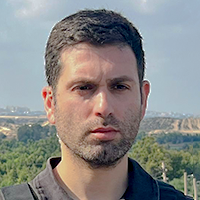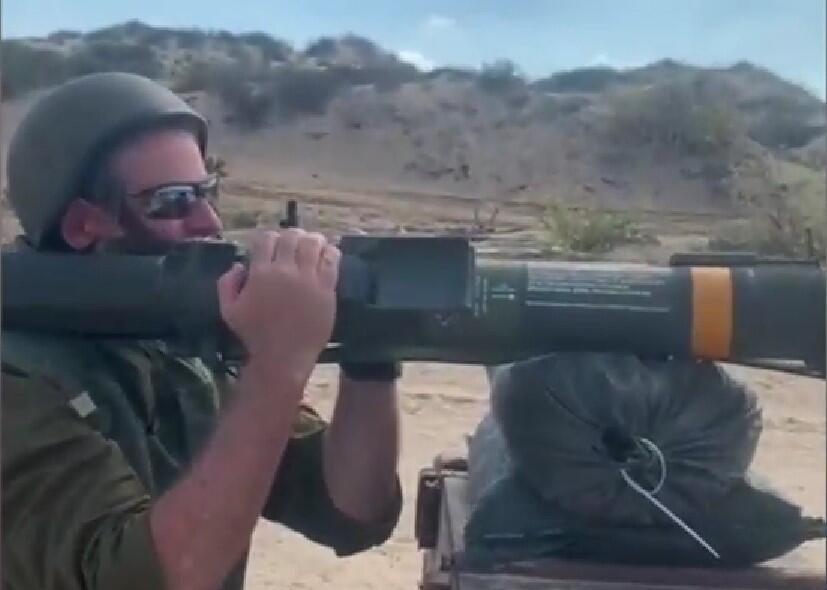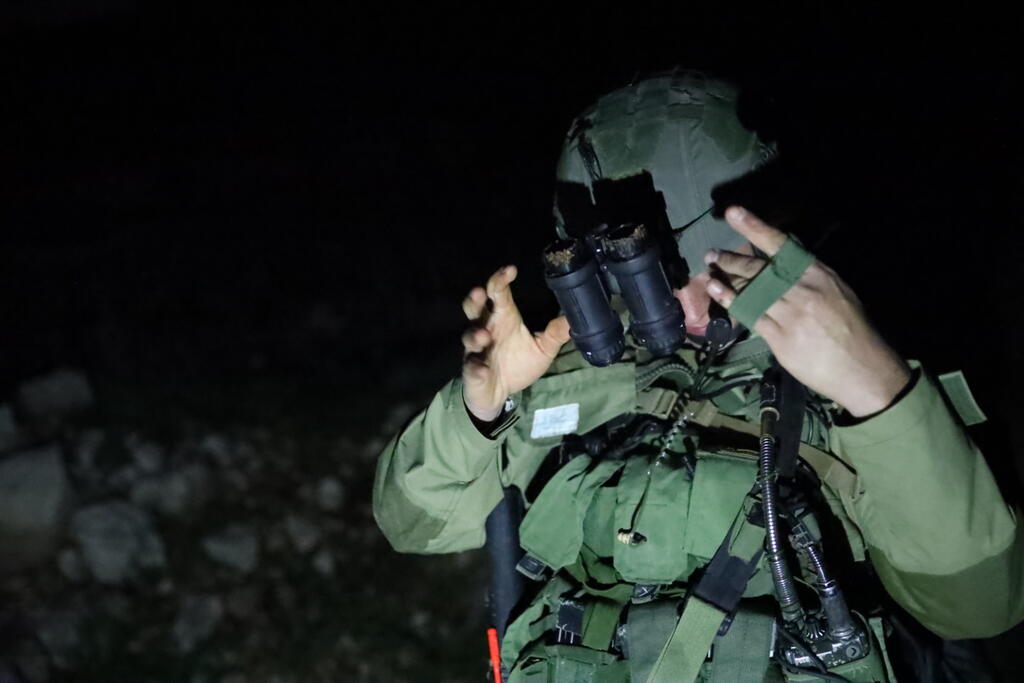This war Israel is going through, one of the most traumatic in its history, is a catastrophe on many levels, whether it's for civilians, medical professionals, mental health professionals, businesses and community centers nationwide. However, there is one sector that for whom wars are a boon, and that's weapons contractors.
Read more:
A good example is the Arrow 3, an exo-atmospheric hypersonic anti-ballistic missile, jointly funded, developed and produced by Israel by Israel Aerospace Industries (IAI) and Boeing. It is overseen by the Israeli Ministry of Defense's "Homa" administration and the U.S. Missile Defense Agency. For the first time ever, it managed to intercept a missile outside of our atmosphere, and can travel up to 1,500 miles. U.S. made bombs also touched down in Israel to supply the Air Force, and precise artillery rounds that saw some use in Israel's northern front.
Testing out a new missile launcher
(Video: IDF Spokesperson's Unit)
When it comes to infantry, several newly-developed weapons of war are being tested inside the enclave, including a sizable amount of fragmentation grenades and artillery rounds, utilized since the beginning of Israel's ground offensive.
In the upcoming, as part of the Biden administration's continued support for Israel, the latter is set to receive two new shoulder-fired missiles to complement the existing stock of Leo and the MGM-1 Matador surface-to-surface cruise missiles.
These new missiles will be integrated into the existing arsenal of infantry battalions operating in Gaza, and are 50% larger than the current stockpiles, with a more expansive range for destruction and an increased "bunker-busting" capabilities. Both missiles are named after Israeli communities in the western Negev portion of Israel.
The shoulder-fired rockets are engineered for warfare in highly populated areas where tanks struggle to navigate or where it's unsafe to use mortar fire. They are multi-purpose, capable of demolishing rooms housing terrorists, striking enemy-occupied vehicles, and eliminating Hamas hideouts. The new shoulder-fired rockets, each weighing approximately 22 pounds, require only a few hours for certification, with already qualified instructors overseeing the process.
In contrast to the Leo and Matador missiles, these new rockets feature a multi-step activation process rather than a two-step one, enhancing troop safety. This feature also holds financial implications - in case a soldier initiates the use of these rockets but does not actually fire them, it allows for the possibility of reusing the rockets at a later time.
Last month, Land Forces debuted the new IWI Negev 7, a gas-operated machine gun, in Gaza. It uses 7.62 mm diameter bullets, which offer superior wall and rubble penetration, an essential feature when engaging terrorists who may be hiding behind such structures. Despite the enhanced firepower, the Negev itself maintains its original weight of approximately 16.5 lbs, allowing relative ease in maneuverability and the capability to unleash high-volume, broadside fire on various targets, delivering a more devastating impact. The upgraded Negev also features a projectile aim for precision in single-shot mode, rather than automatic.
In tandem with the introduction of the improved machine gun, the vests of the machine gun operators in the infantry divisions have also been modified in order to accommodate the drum magazines for the heavier bullets, ensuring more ammunition is readily available for the troops. Land Forces have stated that the upgraded machine gun was designed to encounter fewer operational hurdles, a feature that bodes well in the sandy and dusty conditions of the Gaza Strip.
Easier to bring drones down
The military has also expanded the implementation of Smart-shooter, a sophisticated system that utilizes electro-optical sensors and AI-assisted image processing to precisely track and engage targets. This advanced scope possesses the ability to effectively follow and lock onto moving targets, delivering maximum accuracy upon impact.
It has successfully been utilized by infantry fighters to neutralize incoming Hamas drones that were approaching their position on multiple occasions. The Smart-shooter scope is capable of detecting and locking onto aerial targets, where traditional ground-based reference points are absent. The intelligent "brain" within the scope autonomously calculates ballistic deviations, enabling it to estimate the flight direction and speed of the impending threat.
The IDF has also seen significant progress in the field of night vision technology. For the first time in active combat, they utilized the "Ido" night vision device (NVD). This device offers a 3D image and makes extended use of NVDs less strenuous. The "Ido" is designed with modularity in mind and can be effortlessly attached to the front of a soldier's helmet under various circumstances, catering to either one or both eyes. It also functions effectively in confined spaces. Initially, the "Ido" was exclusively issued to special forces units, but its distribution has been systematically broadened to include battalions serving in Gaza over the past weeks.
That said, some reservists say that up until this point, no night vision equipment, neither new or old, has been assigned to their units, forcing them to rely on more primitive means of discerning friend from foe.







